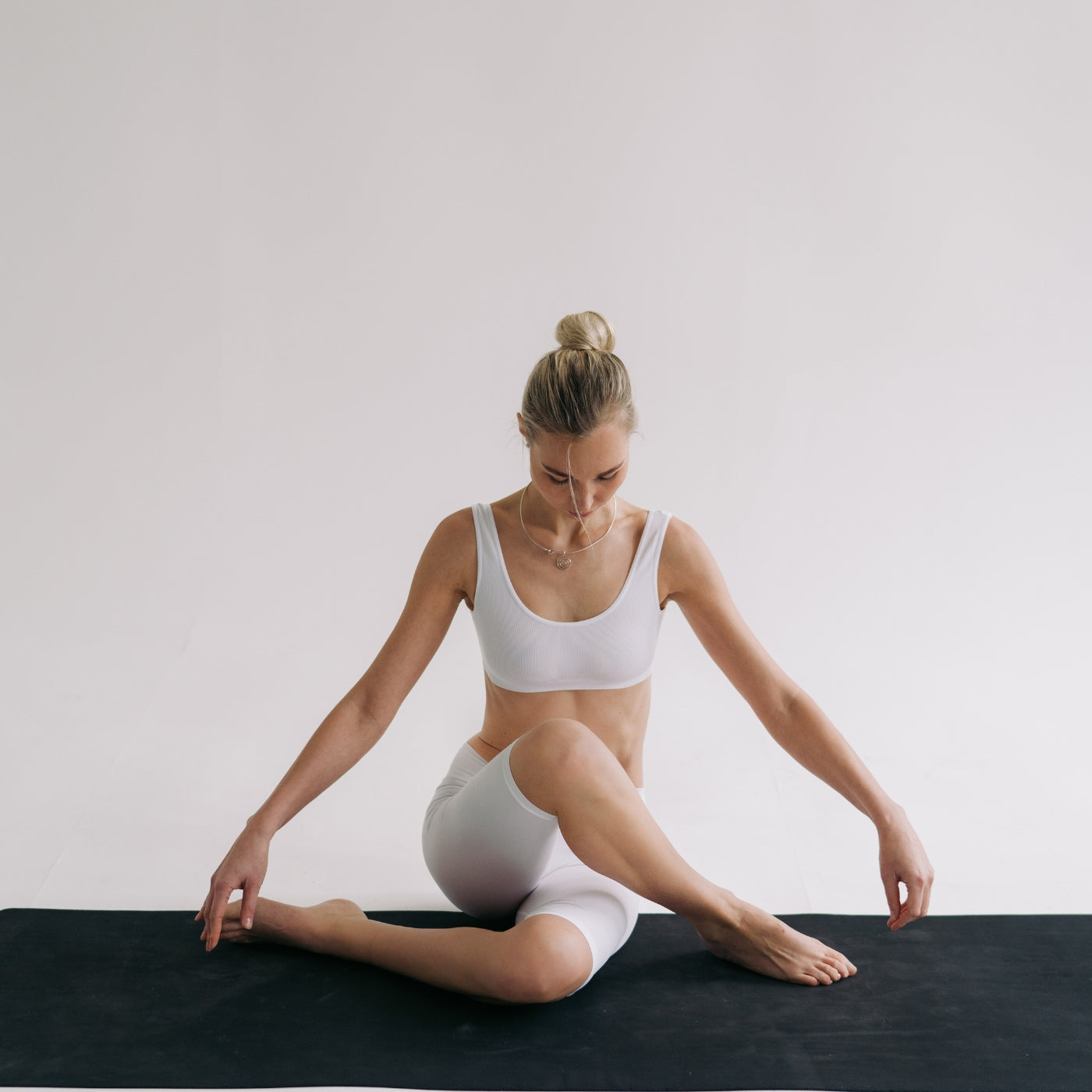
No one is stress-free. Life naturally comes with stress (unless you’re the Dalai Lama). In fact, being under stress means you are pushing yourself and stepping outside of your comfort zone, which is usually a good thing!
However, day-to-day stress, whether it’s from pressure at work, going through a rough breakup, or an overly full to-do list that is seemingly never-ending - these constant cortisol pushers are no good for your health. It’s like constantly being in a state of fight-or-flight. And you might not even recognise it!
Stress can affect your whole body, including your hair, nails, and skin. But since stress is a part of life, what matters is how you handle it.
So before you stress about the stress in your life, we want to give you some handy tips and methods to help you level out.
What is stress?
Psychological stress arises when people are under mental, physical, or emotional pressure. It arises when the individual perceives that the pressure exceeds their adaptive power.
The brain picks this up and releases stress hormones such as cortisol and epinephrine. This triggers a wide range of physiological and behavioural changes and responses that try to adapt the body to stress.
How does stress affect your skin?
Stress causes a chemical response in your body that makes the skin more sensitive and reactive. It can also make it harder for skin problems to heal.
Have you ever noticed that you break out more when you’re stressed? This is because stress causes your body to make hormones like cortisol, which tells glands in your skin to make more oil. Oily skin is more prone to acne and other skin problems.
Stress can also cause premature aging, as it causes changes to the proteins in your skin and reduces its elasticity. This loss of elasticity can contribute to wrinkle formation.
Stress can also make skin problems worse. For example, stress can aggravate psoriasis, rosacea, and eczema. It can also cause hives and other types of skin rashes and trigger a flare-up of fever blisters.
Ok, take a deep breath. Because we have the solutions.
7 ways to reduce your stress levels
#1. Don't neglect your skin. Take care of it, even if you're tired or stressed
Keep your morning and evening skincare routines consistent. At the bare minimum, we recommend cleanse, hydrate and treat.
If your skin is becoming more oily or starting to breakout, try an balancing routine like our Supercharged Trio. It is specifically designed to help balance the oiliness of your skin, maintain optimal hydration and keep pores clear. Add in a twice weekly exfoliation for amazing results, like our Bright Skin Face Polishing Powder.
#2. Get regular exercise
It's good for your skin and the rest of your body. Regular exercise, even a brisk walk, is shown to improve your mood and decrease feelings of depression, anxiety, and stress by releasing endorphins and dopamine, which are known to help produce positive feelings and reduce the perception of pain.
It can also increase brain sensitivity to the hormones serotonin and norepinephrine, which relieve feelings of depression.
Interestingly, it doesn’t matter how intense your workout is. It seems that exercise can benefit your mood no matter the intensity of the physical activity.
Plus, getting the heart rate up during exercise and improving blood circulation, can help to deliver oxygen and nutrients to the skin which keeps the skin healthy, promotes collagen production, and promotes new skin cells which keeps the skin looking glowing and is also helpful for anti-aging.
#3. Take time for yourself to do something you enjoy
Even if you only have 10 minutes. Take a bath, read a book, call a friend or family member. Choose an activity that you’re good at, such as a sudoku puzzle or sketching, or something productive like weeding your garden or tidying up a room in your house.
These kinds of activities gives your brain a chance to zone out and push worries out of the forefront of your mind.
#4. Try some of these stress management techniques
Guided imagery - is like taking a short vacation in your mind.
It can involve imagining yourself being in your "happy place"—maybe picturing yourself sitting on a beach, listening to the waves, smelling the ocean, and feeling the warm sand underneath you.
Guided imagery can be done with a recording where you listen to someone walk you through a peaceful scene. Or, once you know how to do it yourself, you can practice guided imagery on your own.
Simply close your eyes for a minute and walk yourself through a peaceful scene. Think about all the sensory experiences you'd engage in and allow yourself to feel as though you're really there. After a few minutes, open your eyes and return to the present moment.
Breathing exercises
Belly breathing
- Sit or lie flat in a comfortable position.
- Put one hand on your belly just below your ribs and the other hand on your chest.
- Take a deep breath in through your nose, and let your belly push your hand out. Your chest should not move.
- Breathe out through pursed lips as if you were whistling. Feel the hand on your belly go in, and use it to push all the air out.
- Do this breathing 3 to 10 times. Take your time with each breath.
- Notice how you feel at the end of the exercise.
4-7-8 breathing
This exercise also uses belly breathing to help you relax. You can do this exercise either sitting or lying down.
- To start, put one hand on your belly and the other on your chest as in the belly breathing exercise.
- Take a deep, slow breath from your belly, and silently count to 4 as you breathe in.
- Hold your breath, and silently count from 1 to 7.
- Breathe out completely as you silently count from 1 to 8. Try to get all the air out of your lungs by the time you count to 8.
- Repeat 3 to 7 times or until you feel calm.
- Notice how you feel at the end of the exercise.

#5. Get enough sleep
Seven to 8 hours each night is ideal. Need some tips of falling asleep and staying asleep? Check out our blog “10 tips and trick for better sleep.”
#6. Say no
It's OK to set limits and boundaries to lower your stress.
Yes, this one can take a little longer to practise, but its benefits are going to be much more permanent.
Check in with yourself, are you feeling resentful of people asking too much of you, and it seems to happen often?
Do you find yourself saying yes to things you’d rather not do, just to avoid upsetting or disappointing others?
Are you feeling that most of what you do is for other people—and they may not even appreciate it that much.
If so, it’s time to set some boundaries for yourself and for others. The short term effects of potentially upsetting someone is probably a lot less than what you have built up in your mind.
Start with small things, such as turning on an autoresponder on your work email for after hours, and creating a schedule for your family members to help with household chores.
#7. Eat a healthy, balanced diet
Aim for whole foods and plenty of fresh fruits and vegetables. Processed and sugar-laden foods trigger more inflammation inside your body.
For a more in depth look at eating for healthy skin, read our blog “Science-backed tips: 12 ways your diet can improve your skin.”
